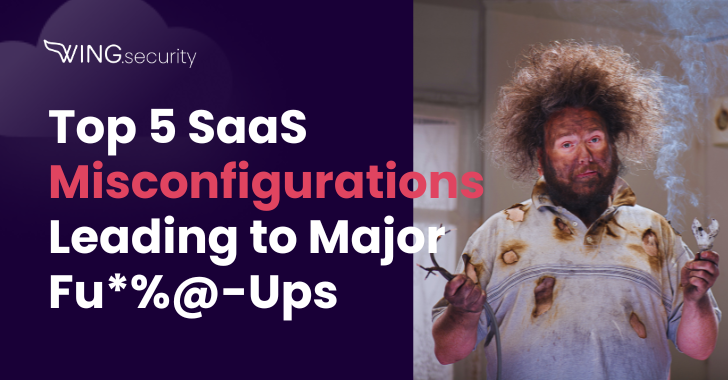5 SaaS Misconfigurations Leading to Major Fu*%@ Ups
- November 4, 2024
- Posted by: claudia
- Categories:

The proliferation of Software as a Service (SaaS) applications introduces a myriad of configuration options, API capabilities, and app-to-app integrations, leading to heightened security risks for organizations. Insider threats and data breaches pose significant challenges for security teams, with misconfigurations identified as a primary vulnerability. This article delineates five critical misconfiguration mistakes in SaaS environments that can precipitate security breaches.
The first identified misconfiguration is the excessive privileges granted to help desk administrators. These personnel often have access to sensitive account management functions, making them attractive targets for cyber attackers. By manipulating help desk staff into resetting Multi-Factor Authentication (MFA) for privileged accounts, attackers can potentially gain unauthorized access to crucial systems and data. The remediation action proposed is to limit help desk privileges strictly to essential user management tasks, barring alterations to admin-level configurations.
The second misconfiguration highlights the absence of MFA enforcement for super admin accounts. Super admins possess elevated privileges, making these accounts highly valuable for attackers, especially if they are not secured with MFA. The compromise of such accounts could allow attackers full control over an organization’s SaaS environment, resulting in severe reputational and operational damage. To mitigate this risk, the article recommends mandatory enforcement of MFA for all active super admin accounts.
A third critical misconfiguration pertains to the failure to block legacy authentication protocols like POP, IMAP, and SMTP, particularly within Microsoft 365 environments. These legacy protocols do not support MFA, rendering accounts vulnerable to credential-based attacks. The article advises the use of Conditional Access policies to block these outdated authentication methods and enforce modern, secure alternatives.
The article also addresses the issue of super admin count not adhering to recommended limits. An excess or deficiency in the number of super admins can either lead to overexposure of sensitive controls or the risk of being locked out of essential business systems. It advocates for maintaining a balance of 2-4 super admin accounts, excluding break-glass accounts, in line with the Cybersecurity and Infrastructure Security Agency (CISA) SCuBA recommendations for enhanced security and operational continuity.
Finally, the article discusses the risks associated with misconfigured Google Groups settings. Poorly defined permissions can expose sensitive data shared within Google Workspace, facilitating potential insider threats where authorized users might inadvertently or maliciously leak information. The recommended action is to ensure only designated individuals are permitted to view and access group content, minimizing the chance of data exposure and insider misuse.
The article emphasizes the importance of an ongoing process of identifying and rectifying SaaS misconfigurations. Given the dynamic nature of SaaS applications, continuous monitoring and adjustments are essential to ensure security. SaaS security platforms, such as Wing Security, facilitate the monitoring and management of configurations, identifying and prioritizing risks more effectively.
Through its configuration center, Wing Security employs the CISA SCuBA framework to isolate and underscore critical misconfigurations, providing actionable steps for remediation. With features such as real-time monitoring, compliance tracking, and an audit trail, organizations can maintain a secure SaaS environment, protecting against significant lapses that arise from misconfigurations.
In conclusion, proactive identification and correction of SaaS misconfigurations are paramount to safeguarding organizations against potentially catastrophic security incidents. By focusing on critical configuration mistakes, CISOs can fortify their security posture and enhance organizational resilience. A comprehensive SaaS security risk assessment is a prudent step towards mitigating risks associated with misconfigurations, thus averting data breaches and ensuring continuity of business operations.
